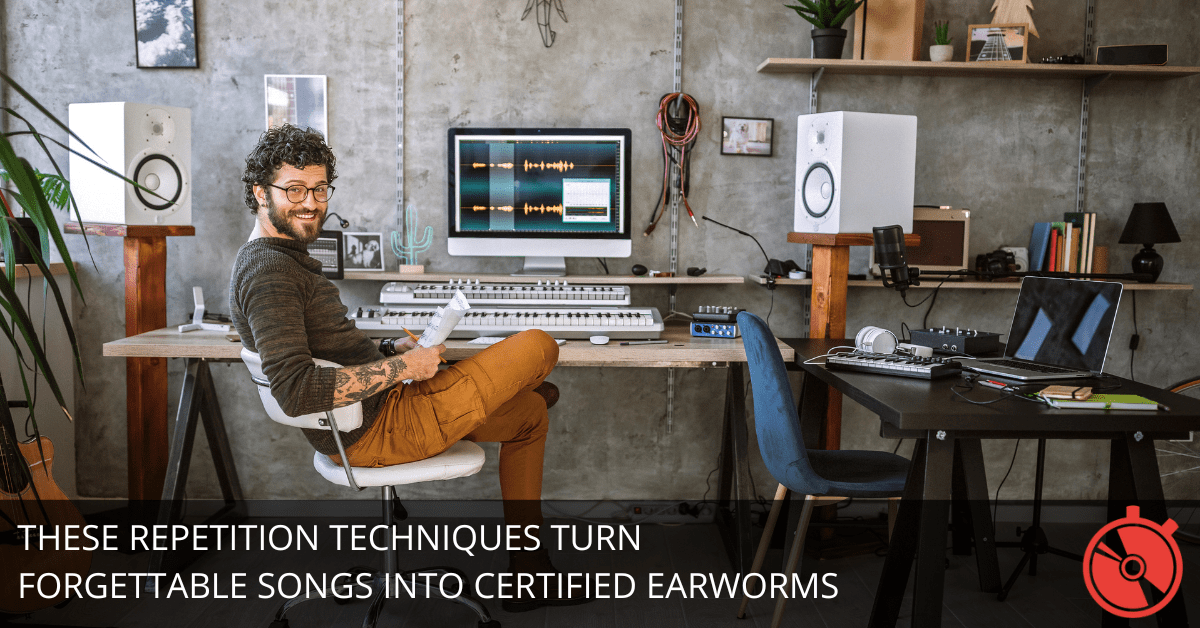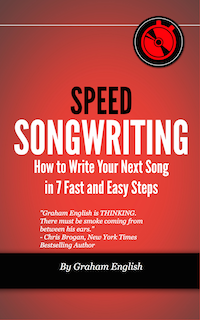
There’s a reason your favorite song gets stuck in your head—and it’s not just luck or a catchy beat.
It’s repetition. But not the kind that makes your song feel lazy or predictable.
I’m talking about strategic, satisfying, goosebump-triggering repetition that professional songwriters use to make their hooks unforgettable.
In fact, there are three kinds of repetition you should be using in every song: lyrical, melodic, and structural.
Let’s break them down, one at a time, and show you exactly how to use them.
1. Lyrical Repetition: Say Less, Mean More
Repetition in lyrics isn’t about being repetitive. It’s about reinforcing an idea until it becomes emotional muscle memory.
Think about these lines:
- “Let it be, let it be, let it be, let it be…”
- “We found love in a hopeless place…” (repeated four times)
- “I’m a survivor, I’m not gon’ give up…”
These hooks don’t just repeat for the sake of it. They anchor the listener in a specific moment or emotion and make sure you feel it, not just hear it.
Here’s what to do next:
- Repeat your core message—but use a slight variation if needed. For example, Rihanna’s “We found love…” keeps the same line, but the production builds around it.
- Use it as a climax. Don’t waste your best line in a throwaway pre-chorus. Put it where the emotional tension peaks—typically the chorus or bridge.
- Match the phrasing to the beat. If your melody is tight and rhythmic, repeating the lyric like a chant can turn it into a percussive hook.
Pro move: If your chorus doesn’t have at least one repeated phrase, you’re leaving memorability on the table.
2. Melodic Repetition: Make It Feel Like Home
The brain craves familiarity. That’s why repeating melodies helps your listener feel grounded, even when the lyrics shift or the chords change.
But you’ve got to do it right.
Melodic repetition isn’t just looping the same line. It’s about echoing contour, rhythm, and tone across sections so your melody becomes a map.
Take “Rolling in the Deep” by Adele. The verse, pre-chorus, and chorus echo each other with similar rises, drops, and note spacing, but each section builds intensity.
Here’s how to use it:
- Start with a strong melodic shape (rising, falling, arc-shaped, etc.), and reuse it in the next line with one twist—maybe shift the final note or rhythm.
- Think in call-and-response. Write a melody that feels like a question, then echo it like an answer in the next phrase.
- Keep the rhythm consistent. Even if the pitch changes, a repeated rhythm locks in the groove.
What to avoid: Changing the melody every two bars. That’s like switching radio stations mid-song. Nobody’s following you.
Quick test: Sing your verse and your chorus back-to-back. If they sound like they belong in the same song—but the chorus lifts—you’re winning.
3. Structural Repetition: Build the Framework That Sells the Song
This is the big-picture repetition. It’s how your sections reinforce each other and how your song earns its payoff.
Most hits are built on some form of ABABCB structure. Verse → Chorus → Verse → Chorus → Bridge → Chorus. Simple? Yes. But the repetition is intentional.
Let’s zoom in:
- Re-use chorus lyrics—don’t rewrite your hook every time. Every time your chorus comes back, it’s a chance for your listener to sing along and lock it in.
- Echo phrasing between verse and chorus. For example, if your verse has four lines with a similar meter, try mirroring that in your chorus to keep flow consistent.
- Use the bridge to break the repetition. That contrast makes the final chorus hit even harder.
Here’s what to do next:
To get the most out of structural repetition, map your sections like this:
Verse 1 (intro to concept)
Chorus (repeat core hook)
Verse 2 (expand concept, new imagery)
Chorus (same words, more weight)
Bridge (emotional twist or reflection)
Final Chorus (same again—but now it *means* more)
Pro trick: Stack your repetitions. Use the same core lyric, melody, and phrasing every time the chorus hits. That’s how you write a hook people can’t forget even if they tried.
The Bottom Line
Repetition isn’t lazy—it’s powerful. When done right, it’s how a song becomes an experience.
Here’s how to burn your hook into your listener’s memory:
- Say it more than once (Lyrical).
- Sing it in a way that sticks (Melodic).
- Frame it so it keeps paying off (Structural).
Want a simple test?
Play your song for a friend.
Then ask them five minutes later: “What line do you remember?”
If they quote your hook, you nailed it.
If not? Repetition might be what’s missing.
Go write something unforgettable.

Enter your first name and email address below and click “GET ACCESS NOW!” to get the Speed Songwriting Cheat Sheet delivered to your inbox!
We guarantee 100% privacy. Your information will not be shared.

Leave a Reply